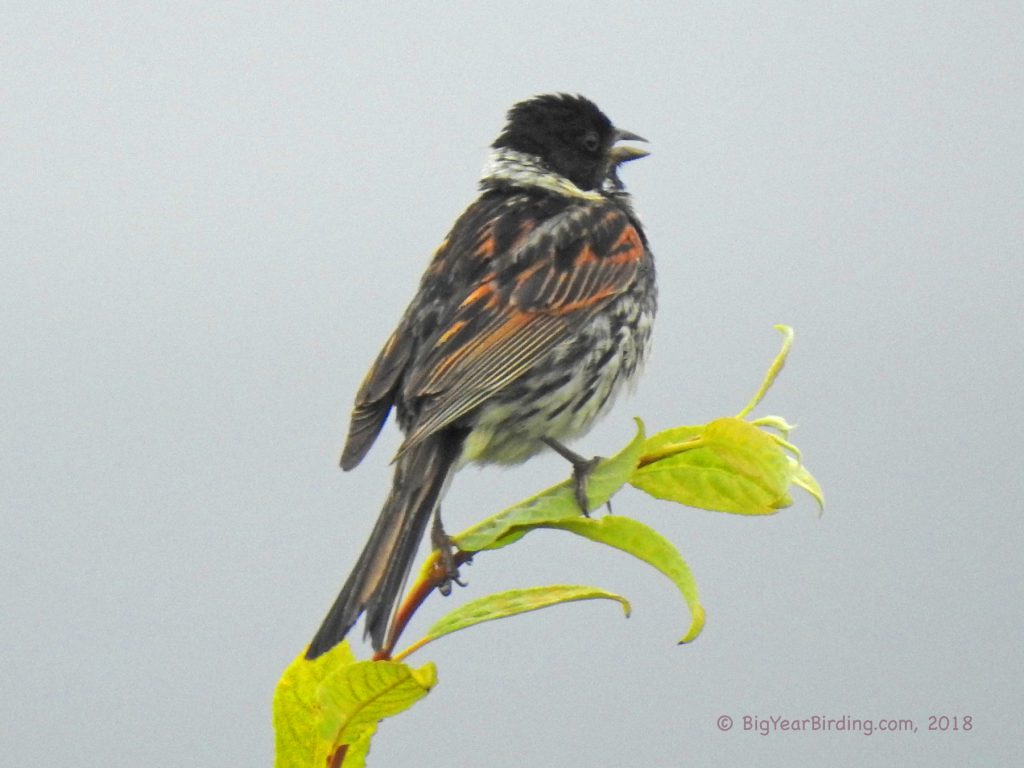The Reed Bunting (Emberiza schoeniclus) is a small passerine bird that belongs to the family Emberizidae. It measures about 6.3-6.9 inches (16-17.5 cm) in length and has a wingspan of 8.7-9.8 inches (22-25 cm). The male Reed Bunting weighs around 0.5-0.7 oz (14-20 g), while the female is slightly lighter, weighing about 0.3-0.5 oz (8-14 g).
The Reed Bunting is a distinctive bird with its black head and throat and white collar. The male has a black head and bib, a white collar, and a streaked brown back. The female is more subdued in color, with a brown head and a streaked brown back. Both male and female have a pale eyebrow and a pinkish-brown bill.
The Reed Bunting is a partial migrant, with some populations remaining resident throughout the year and others moving southwards to spend the winter in southern Europe and North Africa. In the UK, Reed Buntings from Scotland and northern England migrate to the south during the winter, while those from southern England remain resident. In continental Europe, the Reed Bunting breeds from Scandinavia to the Mediterranean and migrates to southern Europe and North Africa for the winter.
The Reed Bunting is a bird of wetland habitats, and its distribution is closely linked to the availability of suitable breeding habitat, which includes reed beds, marshes, and wet meadows. It feeds on a variety of seeds and insects, and during the breeding season, it feeds mainly on insects. In winter, when insect food is scarce, it feeds more on seeds.
The Reed Bunting is a common and widespread bird throughout its range, but in some areas, such as the UK, its numbers have declined due to habitat loss and degradation. The Reed Bunting is protected by law in many European countries, and conservation efforts are underway to improve its breeding and wintering habitats.

